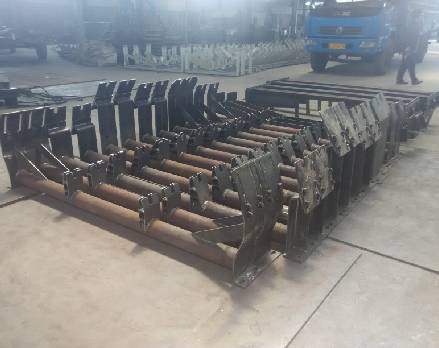 Afrikaans
Afrikaans  Albanian
Albanian  Amharic
Amharic  Arabic
Arabic  Armenian
Armenian  Azerbaijani
Azerbaijani  Basque
Basque  Belarusian
Belarusian  Bengali
Bengali  Bosnian
Bosnian  Bulgarian
Bulgarian  Catalan
Catalan  Cebuano
Cebuano  Corsican
Corsican  Croatian
Croatian  Czech
Czech  Danish
Danish  Dutch
Dutch  English
English  Esperanto
Esperanto  Estonian
Estonian  Finnish
Finnish  French
French  Frisian
Frisian  Galician
Galician  Georgian
Georgian  German
German  Greek
Greek  Gujarati
Gujarati  Haitian Creole
Haitian Creole  hausa
hausa  hawaiian
hawaiian  Hebrew
Hebrew  Hindi
Hindi  Miao
Miao  Hungarian
Hungarian  Icelandic
Icelandic  igbo
igbo  Indonesian
Indonesian  irish
irish  Italian
Italian  Japanese
Japanese  Javanese
Javanese  Kannada
Kannada  kazakh
kazakh  Khmer
Khmer  Rwandese
Rwandese  Korean
Korean  Kurdish
Kurdish  Kyrgyz
Kyrgyz  Lao
Lao  Latin
Latin  Latvian
Latvian  Lithuanian
Lithuanian  Luxembourgish
Luxembourgish  Macedonian
Macedonian  Malgashi
Malgashi  Malay
Malay  Malayalam
Malayalam  Maltese
Maltese  Maori
Maori  Marathi
Marathi  Mongolian
Mongolian  Myanmar
Myanmar  Nepali
Nepali  Norwegian
Norwegian  Norwegian
Norwegian  Occitan
Occitan  Pashto
Pashto  Persian
Persian  Polish
Polish  Portuguese
Portuguese  Punjabi
Punjabi  Romanian
Romanian  Russian
Russian  Samoan
Samoan  Scottish Gaelic
Scottish Gaelic  Serbian
Serbian  Sesotho
Sesotho  Shona
Shona  Sindhi
Sindhi  Sinhala
Sinhala  Slovak
Slovak  Slovenian
Slovenian  Somali
Somali  Spanish
Spanish  Sundanese
Sundanese  Swahili
Swahili  Swedish
Swedish  Tagalog
Tagalog  Tajik
Tajik  Tamil
Tamil  Tatar
Tatar  Telugu
Telugu  Thai
Thai  Turkish
Turkish  Turkmen
Turkmen  Ukrainian
Ukrainian  Urdu
Urdu  Uighur
Uighur  Uzbek
Uzbek  Vietnamese
Vietnamese  Welsh
Welsh  Bantu
Bantu  Yiddish
Yiddish  Yoruba
Yoruba  Zulu
Zulu idler frame
The Idler Frame A Key Component in Modern Mechanisms
In the realm of engineering and mechanical design, the idler frame plays a pivotal role in various systems, particularly in conveyor belts and similar applications. This seemingly simple component serves multiple functions that can greatly enhance the efficiency and performance of mechanical systems.
An idler frame can be defined as a supporting framework designed to hold idler rollers. These rollers are crucial in applications where materials need to be moved with minimal friction and maximum reliability. The idler frame essentially acts as the backbone of the conveyor system, providing stability and support to the rollers.
One of the primary purposes of the idler frame is to facilitate the smooth movement of materials
. By providing a stable platform for the idler rollers, it reduces the chances of slippage or misalignment during operation. This is especially important in heavy-duty applications, where the weight and inertia of the materials being transported can lead to significant operational challenges. A well-designed idler frame ensures that the rollers remain in the optimal position, thereby contributing to a more effective and efficient material handling process.idler frame

Moreover, the idler frame serves as a component of the conveyor belt's overall structure. It helps to distribute the weight of the transported materials evenly across the entire frame, which reduces stress on individual components. This distribution is vital for the longevity of the system, as it minimizes wear and tear on both the rollers and the conveyor belt itself. A robust idler frame can significantly extend the lifespan of a conveyor system, ultimately reducing downtime and maintenance costs.
Another notable advantage of the idler frame is its adaptability. Modern industries require flexibility in their processes, and the idler frame can be designed to accommodate various configurations and setups. Whether it’s for a straight conveyor line or a more complex routing system, the idler frame can be customized to meet specific operational needs. This adaptability makes it a valuable asset in industries ranging from manufacturing to logistics.
The materials used in constructing idler frames also play a crucial role. They are typically made from durable metals such as steel or aluminum, which provide the necessary strength and resilience to withstand harsh industrial environments. Additionally, advancements in materials science have led to the creation of lighter yet equally strong alternatives, improving energy efficiency in conveyor systems.
In conclusion, the idler frame may seem like a minor component in the grand scheme of mechanical systems, but it is undeniably essential for the effective operation of conveyor belts and other material handling systems. Its ability to provide stability, reduce wear, and adapt to varying operational needs makes it a crucial element in the design and function of modern machinery. As industries continue to evolve, the importance of the idler frame will only become more pronounced, ensuring the seamless movement of materials and enhancing overall productivity.
-
Revolutionizing Conveyor Reliability with Advanced Rubber Lagging PulleysNewsJul.22,2025
-
Powering Precision and Durability with Expert Manufacturers of Conveyor ComponentsNewsJul.22,2025
-
Optimizing Conveyor Systems with Advanced Conveyor AccessoriesNewsJul.22,2025
-
Maximize Conveyor Efficiency with Quality Conveyor Idler PulleysNewsJul.22,2025
-
Future-Proof Your Conveyor System with High-Performance Polyurethane RollerNewsJul.22,2025
-
Driving Efficiency Forward with Quality Idlers and RollersNewsJul.22,2025





























